The ROI of content can be astounding. Content costs 62% less than traditional forms of marketing, yet produces 3x as many leads.
But what do you do when your lead generation strategies aren’t working? Or when the number of leads you’re bringing in starts to plateau?
You have to get creative with your tactics.
So, before you spend an age creating the next snoozefest PDF that nobody downloads, take a look at these fresh ideas for generating leads with content.
#1 Start an Interview-Based Podcast
Interview professionals who represent your ideal clientbase on a podcast. Not only do you get the chance to woo the guests on your show, but also potentially hundreds of listeners who are equally in need of your product or services.
Starting a branded podcast has huge lead generation potential. 60% of podcast listeners look up products after hearing about them on a podcast and a quarter of those people go on to buy the product.
The Recruitment Rollercoaster podcast is an excellent example that you can take inspiration from. Hishem Azzouz, a branding consultant for recruiters, chats with top industry pros and agency owners.

Source: Apple Podcasts
Via conversations with his guests, Azzouz is able to showcase his industry expertise and provide helpful advice. You can do something similar for your industry, so that the next time a potential client needs help, they’ll come to you for it.
Make a list of pros, business owners, influencers, and the like that represent your target prospects. Get on their radar by connecting with them on social media, at events, or commenting on their blog posts, for example. When you’ve warmed them up, pitch the idea of having them as a guest on your podcast.
#2 Create a Self-Assessment Quiz
The purpose of a self-assessment quiz is to help your audience discover the benefits of your product/service and why they need your help. TONIC, an online shop for website templates, generated 7,000+ leads at a conversion rate of 65.5% with such a quiz in one year.
They use a cocktail-themed branding quiz which invites their audience to assess what makes them stand out as a brand. After opting-in, you get a thorough breakdown of your results, along with personalized recommendations. My brand is a margarita by the way.
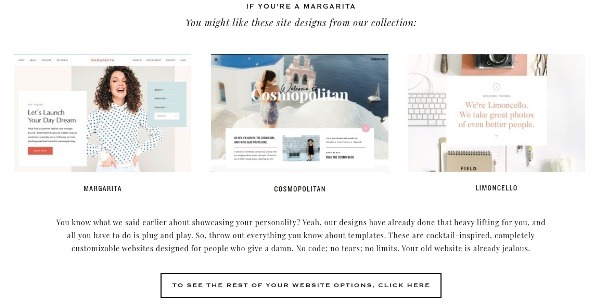
Source: TONIC
This is a super creative example that clearly worked. But, you should create a quiz that’s on-brand for you. In other words, it doesn’t have to be a random Buzzfeed-style “We know what craft beer you should drink based on your mother-in-law’s zodiac sign” quiz. It can be a more serious self-assessment, as in this example:

Source: Clark Integrated Technologies
Whatever your vibe is, use the quiz as part of outbound lead generation. Follow up the results with a personalized email sequence based on your audience’s answers.
#3 Put Together a Digital Flipbook
Traditional lead magnets, such as ebooks, guides, and reports are tried and trusted. But that doesn’t mean they have to stay in the same format forever.
Transform your stale PDF into a piece of interactive content, such as an interactive ebook or report. The reason being, interactive content gets 2x more engagement than static content.
It elevates your lead magnet as readers can engage with the entire document. For example, they can click on links that direct them to more information on your site. Or watch a demo or explainer video directly within the ebook:
These kinds of features make digital flipbooks more useful as an educational resource. And as readers spend more time interacting with your resource, they become better qualified leads with a deeper understanding of your niche, your solution and why it’s necessary.
💡According to our research, 90% of emails submitted through the FlippingBook Online lead capture form are valid. Thus, you get high-quality leads right from your flipbook!
To get started, sign up for your free trial with FlippingBook. Simply upload your PDF and customize your content on the platform by adding interactive elements such as outbound links, video and, most importantly, a form to capture leads within your digital flipbook. Then you can share your awesome resource as a link or embed it to a web page and track the results with FlippingBook.
#4 Chase the Long-Tail
You can use long-tail keywords, i.e. less competitive keywords, to draw potential leads to your site. It’s better to have 100 visitors that are actually interested in your product or services than 1000 visitors who aren’t.
Go after keywords that relate specifically to audience pain points. Questions are often the easiest to build a piece of content around. You can find these questions by typing a main keyword into Google and looking at the “People also ask” box. Here’s an example:
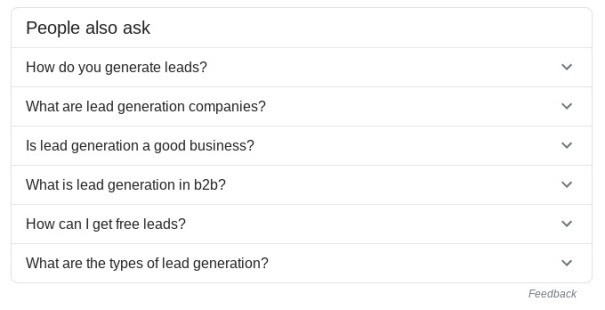
Another useful tool is AnswerThePublic. Type in your keyword or topic and it generates a large number of question-based search engine queries, like so:

Source: AnswerThePublic
Naturally, the next step is to analyze these search queries and choose those most relevant to your business. Use Keyword Planner to check that they have a decent search volume but low competition.
Then create content that provides solutions to these queries and move visitors into the next stage of your funnel with a lead magnet that’s super relevant to the topic at hand.
#5 Capture Leads Via Guest Posts
Guest posting allows you to reach wider audiences within your niche. You may have used guest posts in the past to build links and raise brand awareness. But, perhaps you haven’t thought about utilizing them to capture leads, too.
Link to a landing page or relevant lead magnet in the body of your guest post or the author box. In this example, the guest author links to a landing page for her ebook:
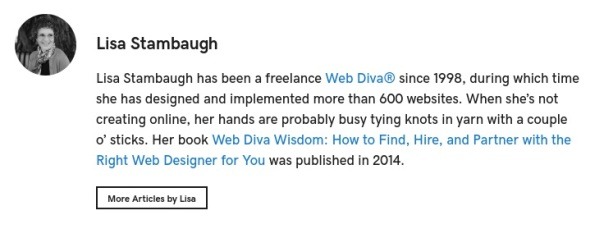
Source: GoDaddy
Another great option is to make your guest post a case study. You may even have more success pitching a case study to your target blogs and websites. I often see in contributor guidelines that sites are looking for personal accounts and stories, rather than generic pieces.
Anyway, if you create a post that demonstrates just how well you do what you do, you’ll attract and generate leads that want the same results. Here’s an example of a guest post that product marketing practitioner Jason Quey wrote for CopyHackers:
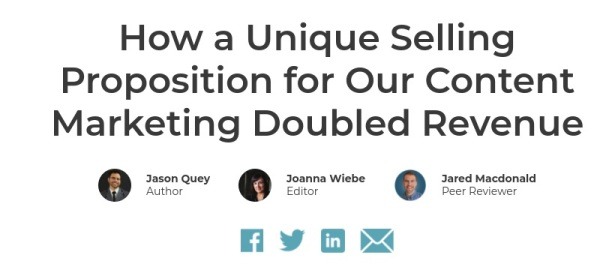
Source: CopyHackers
The opportunity to double your revenue is pretty compelling. You can create this kind of guest post about your own success story or what you’ve achieved for a client.
#6 Integrate Dynamic Content
Dynamic content allows you to add more targeted messaging and therefore increase the likelihood of readers taking action. Meghan Keaney Anderson at HubSpot says,
“Smart content delights customers. When you utilize data-driven content, you can influence a lead's buyer journey.”
There are more ways to use dynamic content than offering personalized product recommendations a la Amazon. One idea is to implement dynamic calls-to-action. And smart CTAs convert 202% better:
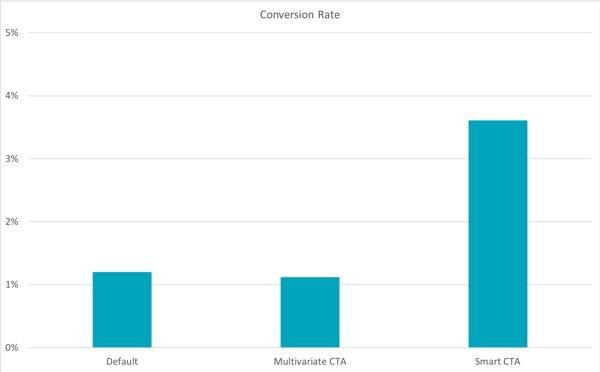
Source: HubSpot
So, for instance, if a reader has already subscribed to your newsletter, a different CTA is generated at the end of your blog post. Because they’re already engaged with your brand, you can encourage the next step, e.g. offer a free trial.
You could also use intelligent pop-ups. Set rules which trigger different pop-ups based on the reader’s behavior. For example, a visitor that has read a certain number of blog posts on your site receives a different message or offer to a new visitor to your site.
The point is you can tweak your messaging through dynamic content to optimize for lead gen.
#7 Launch an Out-of-the-Box Campaign
If all else fails, you can try something completely wackadoodle. Think outside of the box for your next lead generation campaign.
For example, ad agency Cummins & Partners created a video entitled, “The World’s First Crowd Sourced 3D Printed QR Code, Live Streamed Via Go Pro To A Smart Phone Or Tablet Device, Drone Delivery Ticket System Project”:
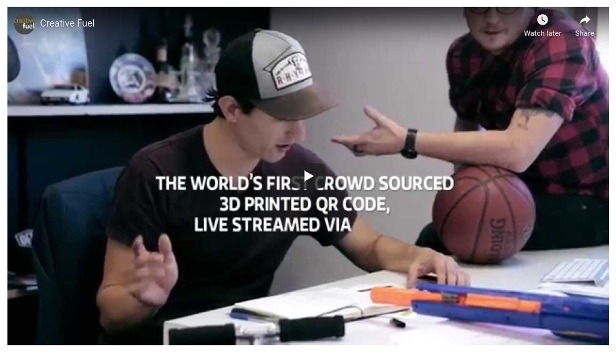
Source: Cummins & Partners
Before you say what!?! This is, of course, a creative campaign that’s meant to poke fun at the tech-obsessed ad industry. The goal: generating interest in a live event.
How can you get creative with your content? Write a short blog post along with your contact details on a tortilla and mail it to potential leads? Hopefully, you can come up with a better idea...
Summing Up
Content is a supremely useful tool for generating leads. Now you know that there are a bunch of ways to utilize content for this purpose that go beyond traditional methods.
You can experiment with new content formats that are primed for generating leads, e.g. a podcast, quiz, or digital flipbook. Or enhance the lead-generating power of your content on the technical side, by optimizing for long-tail keywords or integrating dynamic content.
Now it’s over to you to try out one of these novel ideas.
Author's bio:





